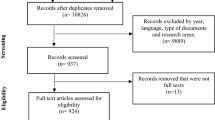Abstract
This paper incorporates an ecosystem model into a model of a simple economy. The decisionmaking agents in the ecosystem are individual organisms aggregated to the species level. A species may provide utility directly to humans, or it may provide utility indirectly because it is used either as a raw material in goods fabrication or as sustenance for other species. We describe a comparative static equilibrium of the ecosystem where species' demands for other species are equal to the supplies of those other species, and energy is conserved. The ecosystem is then embedded in the economy so that the effects of human intervention can be traced through both the ecosystem and the economy. Human intervention creates ecosystem externalities such that ecosystem equilibria are shifted and the new equilibria affect the utility or the production processes of other humans. This framework allows us to describe in principle which ecosystem services can be efficiently usurped by humans, which waste flows can be efficiently allowed into ecosystems, and which ecosystem organisms and physical attributes can be efficiently maintained.
Similar content being viewed by others
References
Caraco, T. and S. L. Lima (1985), ‘Survivorship, Energy Budgets, and Foraging Risk’, in M. Commons, S. J. Shettleworth, and J. Nevin, eds., Quantitative Analyses of Behavior, Vol. 6, Cambridge, MA: Ballinger.
Hannon, B. (1976), ‘Marginal Product Pricing in the Ecosystem’, Journal of Theoretical Biology 56, 253–267.
Hirshleifer, J. (1977), ‘Economics from a Biological Standpoint’, The Journal of Law and Economics 20, 1–52.
Hof, J., D. Rideout, and D. Binkley (1990), ‘Carbon Fixation in Trees as a Micro Optimization Process: An Example of Combining Ecology and Economics’, Ecological Economics 2, 286–294.
Lotka, A. J. (1925), Elements of Physical Biology, Williams and Wilkins, Baltimore, MD.
Menge, B. (1972), ‘Foraging Strategy of a Starfish in Relation to Actual Prey Availability and Environmental Predictability’, Ecological Monographs 42, 25–50.
Muize, K. P. (1977), ‘The Great Kern County Mouse War’, Audobon 79, 159.
Odum, E. P. (1971), Fundamentals of Ecology, Philadelphia: W.B. Sanders Company.
Pimm, S. L. (1982), Food Webs, New York, NY: Chapman and Hall.
Rapport, D. J. (1978), ‘Foraging Behavior of Stentor Coeruleus: A Microeconomic Interpretation’, in A. C. Hamil and T. D. Sargent, eds., Foraging Behavior, Ecological, Ethological, and Psychological Approaches, Garland STPM Press, New York, pp. 77–93.
Staddon, J. E. R. (1980), Limits to Action: The Allocation of Individual Behavior, New York, NY: Academic Press.
Ulanowicz, R. E. (1972), ‘Mass and Energy Flow in Closed Ecosystems’, Journal of Theoretical Biology 34, 239–253.
Zucahetto, J. (1975), ‘Energy-Economic Theory and Mathematical Models for Combining the Systems of Man and Nature’, Ecological Modelling 1, 241–268.
Author information
Authors and Affiliations
Rights and permissions
About this article
Cite this article
Crocker, T.D., Tschirhart, J. Ecosystems, externalities, and economies. Environmental and Resource Economics 2, 551–567 (1992). https://doi.org/10.1007/BF00330283
Issue Date:
DOI: https://doi.org/10.1007/BF00330283




